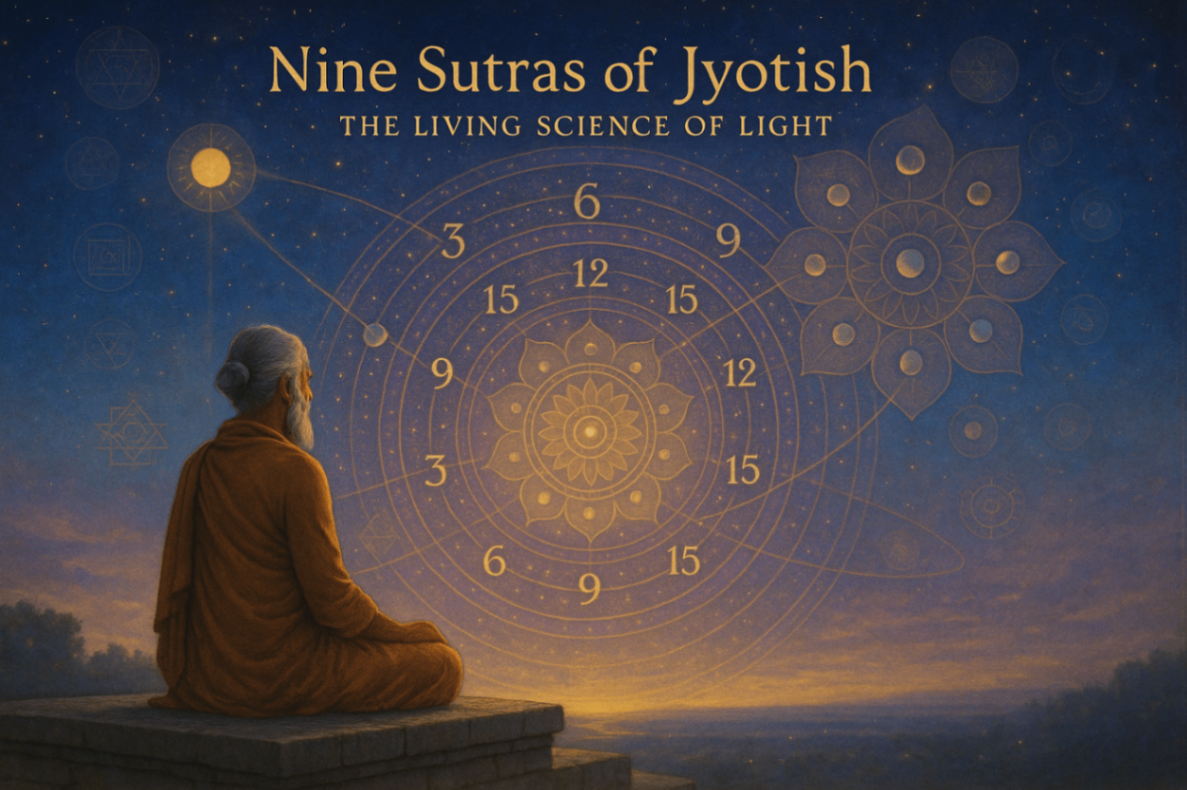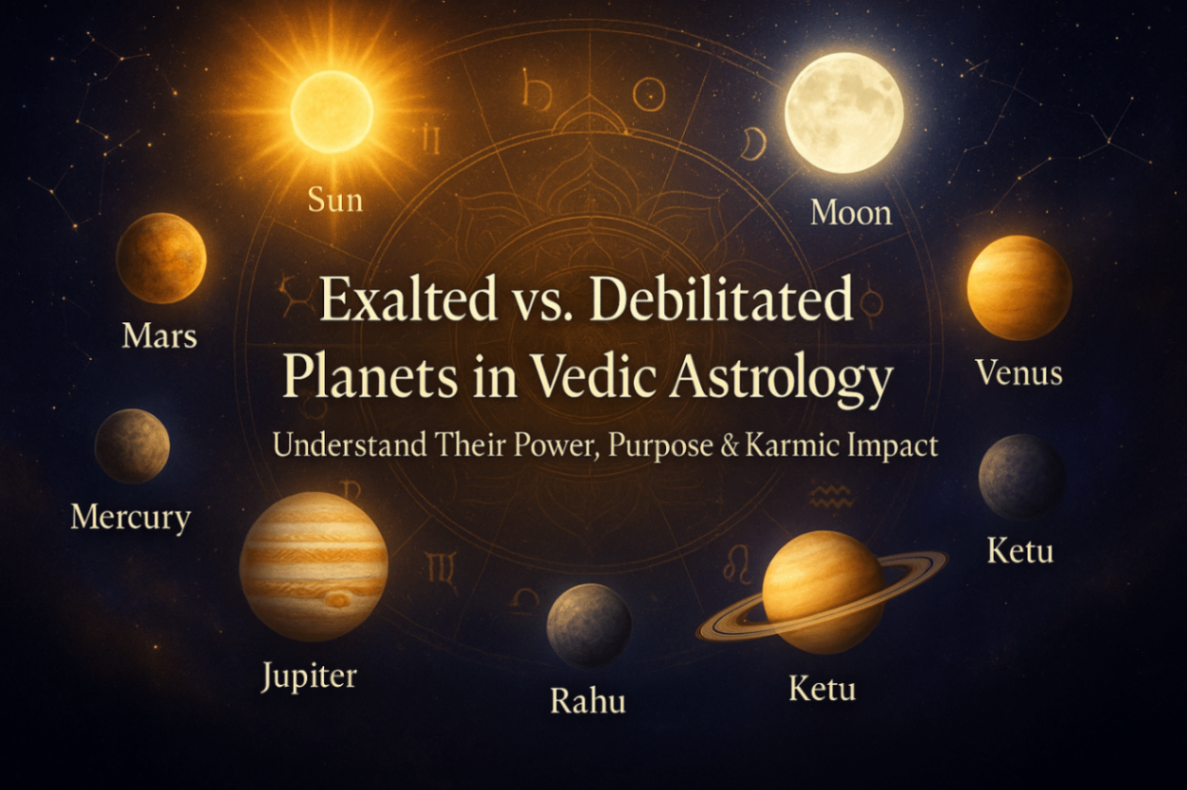Ketu Mahadasha, spanning seven years, is one of the most profound and spiritually significant periods in Vedic astrology. Ketu, also known as the South Node of the Moon, is associated with letting go of material attachments and embracing spiritual growth. Unlike Rahu, which symbolizes obsession and materialism, Ketu represents detachment and introspection.
The Nature of Ketu

Ketu is headless and embodies the body without sensory organs, symbolizing a lack of materialistic desires and a focus on inner wisdom. It is known as the planet of Moksha (liberation) and is believed to carry the energies of past life experiences. Ketu’s influence is introspective and spiritual, urging individuals to transcend worldly attachments.
General Effects of Ketu Mahadasha

During Ketu Mahadasha, individuals often experience a shift towards spirituality and inner growth. It is a period where material wealth and worldly achievements may seem less important. Ketu teaches the lesson of humility, encouraging a detachment from ego and materialism. Here are the general effects observed during this period:
Spiritual Growth: Ketu Mahadasha is a time for spiritual awakening and self-realization. Individuals may develop a deeper interest in spirituality, meditation, and yoga.
Material Detachment: There may be a natural decline in the desire for material possessions. Wealth and status become less significant.
Mental Clarity: Despite being headless, Ketu provides a unique clarity of thought. It encourages intuitive understanding and inner wisdom.
Challenges and Obstructions: Ketu can bring sudden obstacles and challenges. These are meant to teach detachment and resilience.
Health Issues: Some individuals may face health challenges, often related to psychological or unexplained ailments.
Relationship Dynamics: Relationships may undergo transformations. Some may feel isolated or detached from their partners and close ones.
Ketu’s Placement in Various Houses
The effects of Ketu Mahadasha vary significantly based on its placement in different houses of the birth chart:
Ketu in the 1st House: This placement leads to a strong inclination towards spiritual pursuits and self-discovery. The individual may experience identity crises and seek deeper meaning in life.
Ketu in the 2nd House: Financial instability and strained family relationships are common. There may be a loss of interest in wealth accumulation.
Ketu in the 3rd House: Enhances intuitive abilities and spiritual communication. However, it may cause conflicts with siblings and short journeys.
Ketu in the 4th House: Indicates detachment from domestic comforts. There may be disruptions in family life and issues related to the mother or home environment.
Ketu in the 5th House: Can lead to challenges in romantic relationships and issues with children. However, it enhances creative and spiritual pursuits.
Ketu in the 6th House: This placement is considered favorable for overcoming enemies and health issues. It promotes service-oriented activities.
Ketu in the 7th House: Challenges in marriage and partnerships are common. There may be a sense of detachment from the spouse.
Ketu in the 8th House: Enhances interest in occult sciences and mystical experiences. It can lead to sudden gains or losses.
Ketu in the 9th House: Promotes spiritual wisdom and higher learning. It may cause conflicts with father figures or mentors.
Ketu in the 10th House: Indicates a detachment from career ambitions. The individual may seek meaningful and spiritually fulfilling work.
Ketu in the 11th House: Despite detachment from material gains, this placement can bring unexpected financial benefits and social detachment.
Ketu in the 12th House: Strong inclination towards Moksha and spiritual liberation. There may be isolation and a desire for solitude.
Detailed Effects and Insights from Ketu Mahadasha
Ketu Mahadasha and Past Life Connections
Ketu is believed to be connected with past life deeds and experiences. During its Mahadasha, individuals may encounter people and situations linked to their past lives. These interactions are often karmic, meant to resolve past debts and obligations.
Influence of Ketu in Different Nakshatras
Ashwini, Magha, and Mula: Those born under these nakshatras experience Ketu Mahadasha at birth, often facing significant challenges in early childhood. They remember past life deeds, leading to a sense of fear and detachment.
Ashlesha, Jyeshtha, and Revati: These nakshatras, also known as Gandmool, mark the joint or transition points. Birth during these nakshatras indicates karmic debts carried over from previous lives.
Ketus Position in Divisional Charts
Ketus influence is also seen in various divisional charts, which are used to analyze specific aspects of life. In these charts, Ketu can show areas where the individual needs to focus on detachment and spiritual growth.
Ketus Interaction with Other Planets
Ketu interacts uniquely with other planets during its Mahadasha:
Ketu with the Sun: This combination can lead to challenges with authority and a rejection of power.
Ketu with the Moon: This may cause emotional turbulence and heightened sensitivity.
Ketu with Mars: Known as a fiery combination, it can lead to aggression and impulsive actions.
Ketu with Mercury: This period may bring confusion in communication and intellectual pursuits.
Ketu with Jupiter: Jupiter can calm Ketus influence, bringing wisdom and spiritual guidance.
Ketu with Venus: Venus, the guru of demons, can balance Ketu’s detachment with material pleasures.
Ketu with Saturn: Both are malefic planets, and their combination can lead to significant karmic lessons and responsibilities.
Remedies for Ketu Mahadasha

To mitigate the challenges and enhance the positive effects of Ketu Mahadasha, various remedies can be practiced:
Chanting Mantras: Reciting the Ketu mantra Om Ketave Namah and the Ganesha mantra Om Gam Ganapataye Namah can provide relief and guidance.
Worship Lord Ganesha: Regular prayers and offerings to Lord Ganesha, the remover of obstacles, can help navigate the difficulties of Ketu Mahadasha.
Donations and Charity: Donating to those in need, especially items like mustard oil, black grams, and blankets, can appease Ketu.
Spiritual Practices: Engaging in meditation, yoga, and studying spiritual texts can align one with the higher energies of Ketu.
Feeding Dogs: Ketu is associated with dogs. Feeding and taking care of dogs can reduce the malefic effects of Ketu.
Wearing Gemstones: Wearing a cat’s eye gemstone (Lehsunia) is believed to strengthen Ketu’s positive influence, but it should be done after consulting a knowledgeable astrologer.
Conclusion
Ketu Mahadasha is a transformative period that encourages spiritual growth and detachment from materialism. While it may present challenges, it also offers profound opportunities for inner development and self-realization. By understanding the nature of Ketu and practicing the recommended remedies, individuals can navigate this period with greater ease and emerge spiritually enriched.






































